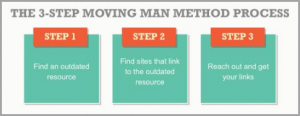
Any digital marketer can give you a set of rules about how to write successful email subject lines based on his or her experience. Problem is, that guidance won’t be based on experience with your audience. The adage that “it’s not what you say, it’s how you say it” is giving way to “figure out if what you’re saying is working (or not).”
And even if your email subscriber list is quite diverse (as most are), you shouldn’t be shy about trying to glean what types of subject lines yield the best results for your campaign (i.e., open and/or take some action on). With every email message deployed, there is huge opportunity to further understand what approach is optimal for each list segment.
Enter split testing.
For email marketers, the A/B split is a tried-and-true tool of the trade. Think of it as embedded polling, where you send out important missives of information, but have built into that engagement a survey of sorts—without, of course, putting them through the paces of a tedious Q&A.
Here’s how it works:
Before sending an email to the entire segment for a campaign, you test two different versions of the message on a small percentage of the list to gauge response rates. Since we’re talking about subject lines today, the process goes something like this: First, you define the split test group – for this example, let’s say the test segment is 10% of your target list. Then, you test two different subject lines using a 50/50 split. That means you send half of the test list one version of the subject line, and you send the other half the alternate version of the subject line. Next, you determine which subject line performs the best, ultimately using the “winner” for the remaining 90% of your campaign. Most email marketing platforms include tools to automate the split test process and provide reports on performance. (If your email solution does not, consider switching to one that does!)
A/B split testing provides insight into how to appeal to your audience, and the variables are only limited by your creativity and willingness to take risks. To keep it simple, you can test how recipients respond to subject line length. You could send one-half of a list segment an email with a five-word subject line, while the other half receives the same email, but with a ten-word subject line.
You could also test personalization. Leverage your data and include a snippet of a subscriber’s personal information in the subject line. Some recipients may appreciate this kind of individual connection; others, may just feel creeped out. Either way, you won’t know until you take a few calculated risks and compare the responses.
Even though the email address should give it away, many attest that you should take advantage of any opportunity to expose subscribers to your brand. Go ahead and test it. See how your list responds to one email that includes your company or product name vs. one that doesn’t.
There are countless other variables to explore, as well, some more nuanced than others. Do subscribers respond to ALL CAPS? Do they react to a kicker, followed by a colon, and then the remainder of a headline? Are active verbs optimal? Because the A/B split involves only a small segment of your list, feel free to take risks with the subject line versions you test. Mix it up. Be interesting. You might want to try a subject line that’s time-sensitive. Or you could ask a question. Or you could make it newsy or emotional or funny.
Just be forewarned: Testing too many variables at once only leads to confusion. You can certainly be creative in what you test, but keep it concise, so that at the end of the test you can send the campaign based on what you know works, not what you think might work.
Make sure your approach adapts to different types of marketing campaigns, too. One type of subject line may work better for product emails, while another type is better for transactional communication or newsletters.
And one last thing…
When it comes to email marketing, don’t ignore trends – but don’t follow them blindly, either. Last year, when symbols in subject lines became popular, many companies hopped on the bandwagon, but that might have come at the expense of a subject line plan with more potential. Stay mindful of trends, but be sure you have the analytics tools to test them as part of a larger subject line testing strategy.
The beauty of this is that as your customer base changes with new acquisitions and opt-outs, you can continue testing to make sure you stay on top of what’s most effective. Don’t fall into trap of overusing the same strategy. What you determined to be a winner a few months ago may not be working now – and if you use the same approach again and again, your subscribers will tune you out.
What you say in subject lines definitely matters. Knowing what you say works matters even more.
Business Articles | Business 2 Community
(270)
Report Post





